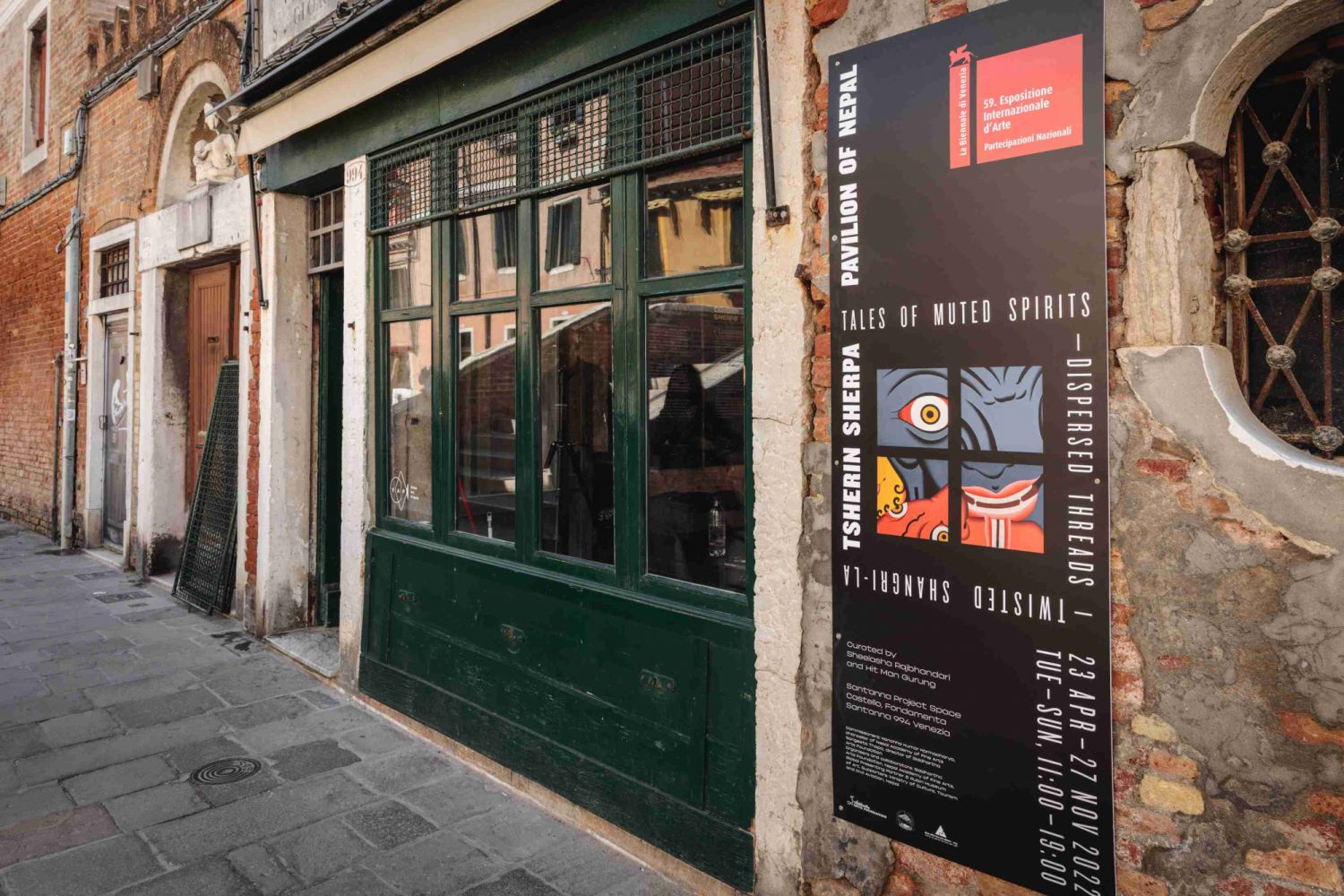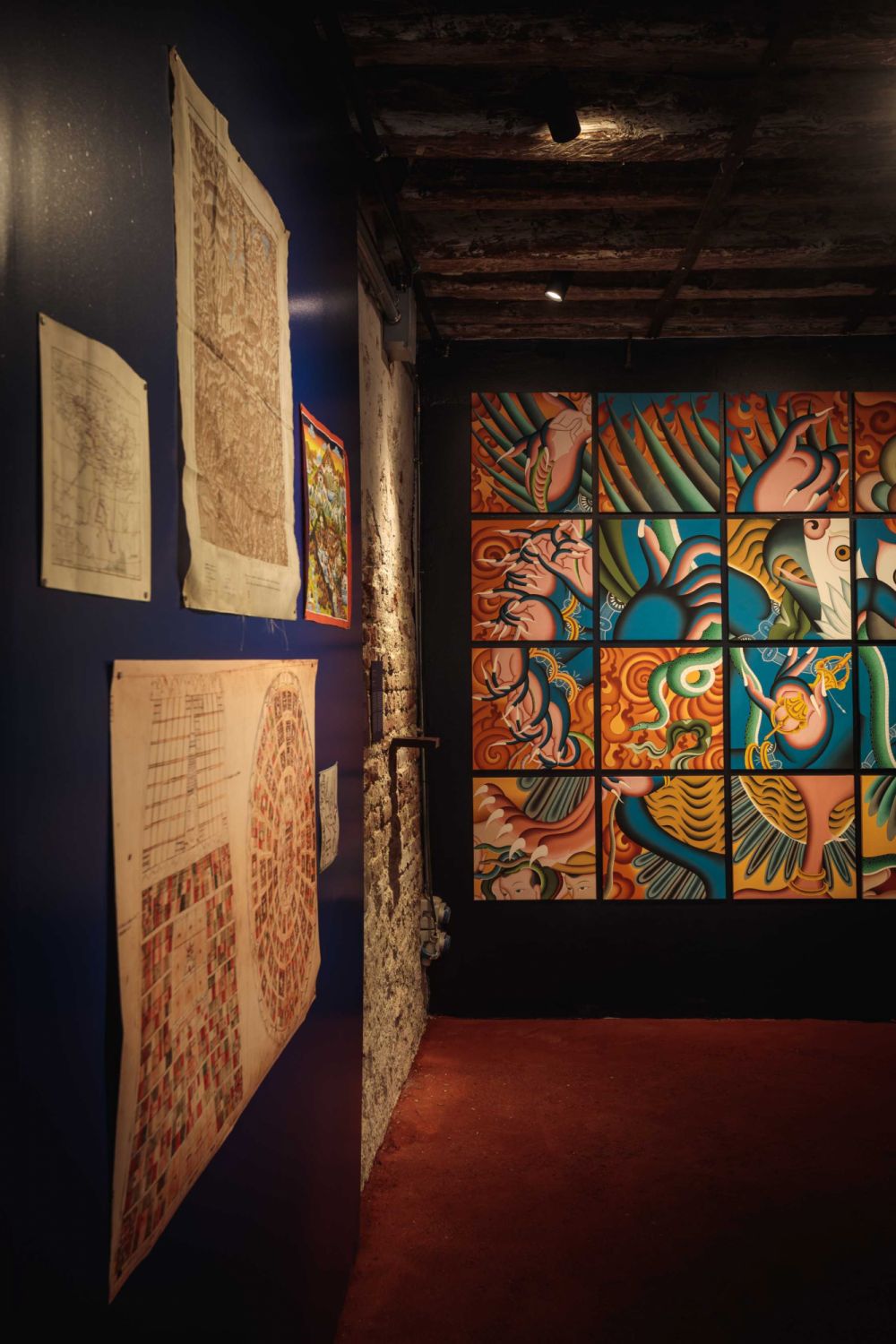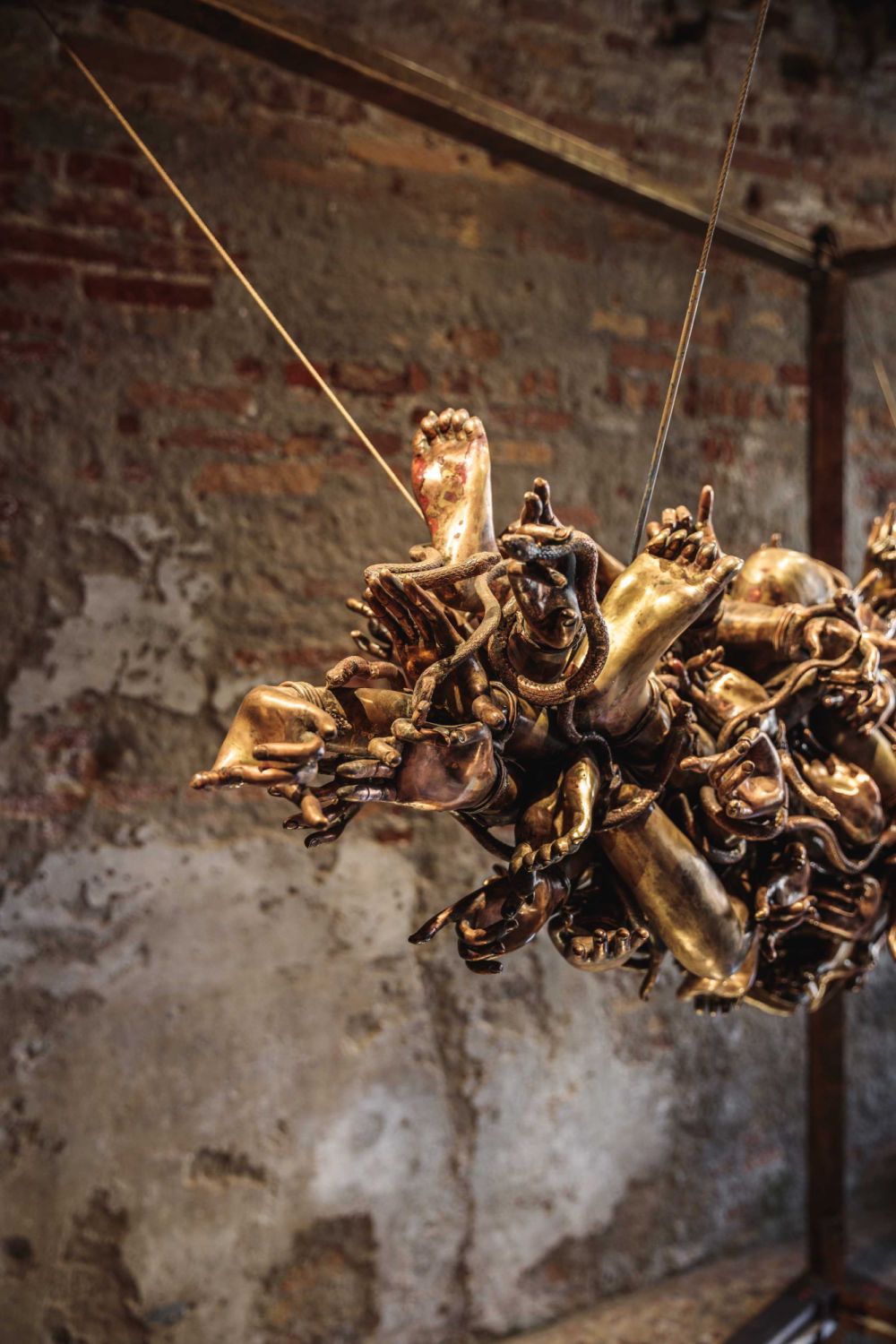This year marks the first time Nepal is participating in the Venice Biennale, which opened in April. It exhibits the works of Nepali artist Tsherin Sherpa—here, he tells Tatler how he brought the art of his native country to the landmark event
Nepal made its debut at 59th Venice Biennale—the first time the country is participating in the illustrious international cultural exhibition.
Helming the debut is Nepali artist Tsherin Sherpa, who is known for his work in the traditional Tibetan artform of thangka painting, featuring illustrations of a Buddhist deity on paper or cotton. Sherpa also often incorporates pop culture references in his work.
The artist’s creations are now on display at the Venice Biennale’s Nepal Pavilion in an exhibition titled Tales of Muted Spirits—Dispersed Threads—Twisted Shangri-La. He hopes the pavilion will challenge the image of Nepal as a “serene and secluded Shangri-la, static in its ideas and lifestyle”, he says—and instead showcase what else the country, and its art scene, have to offer.
Don’t miss: 10 Asian Artists to Spot at the Venice Biennale 2022

Established in 1895, the bi-annual cultural exhibition—which returns this year in Venice after a three-year absence, thanks to the pandemic—opened on April 23 and runs through November 27. Meanwhile, Sherpa’s works are also set to be exhibited at Art Basel in Hong Kong this year from May 27–29.
He talks to Tatler about his experiences in bringing traditional Nepali art to the world stage—and what he hopes viewers will take away from the exhibition.
Read also: 59th Venice Biennale: 3 Pioneering Female Artists You Need to Know





